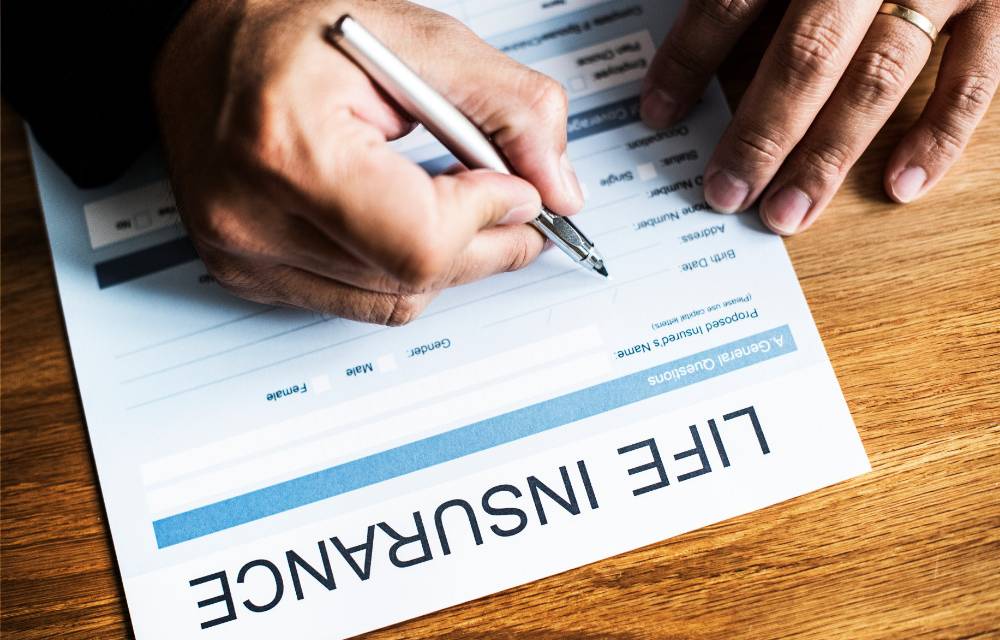
Home Insurance Handbook: Our Guide to Coverages A through F
TABLE OF CONTENTS
Insurance is a safety net. It protects you from accidents that could be financially devastating. The thing is, safety nets don't offer uniform coverage -- they're made of ropes and empty space. Likewise, insurance covers the big things but can also leave you exposed. That's manageable as long as you know where the holes are.
Homeowners' insurance can be particularly confusing in terms of what's covered and what's not. Here's a closer look at six common coverage areas, Coverages A through F. Read on to learn how each protects your home, your personal property, and your bank account.
KEY TAKEAWAYS
- 1
Homeowners insurance offers protection for your home, other structures, personal property, loss of use, personal liability, and medical payments to others.
- 2
Each coverage area has its own limits and exclusions, and it's important to understand what is and is not covered under your policy.
- 3
Higher coverage limits and additional endorsements can provide more protection, but also come with higher premiums.
- 4
It's important to review your policy regularly and make sure it adequately covers your home and belongings.
Coverage A: Protects the house
Coverage A, also known as dwelling protection, is the anchor of your homeowner's policy. If your home suffers structural damage, the insurer assesses your claim against the Coverage A rules in your policy. The maximum dollar amount available to you under Coverage A is the "liability limit." You'll find it on your policy declarations page.
There are two key points to note here. First, you will pay a deductible before your insurer funds any home repairs under Coverage A. Your policy might specify multiple deductibles -- say, one for windstorm damage and another for fire damage.
Second, the insurer won't pay anything if your policy excludes the cause of the damage. For example, most homeowners' policies exclude earthquake damage. In that case, if an earthquake levels your home, you're on the hook to rebuild without help from your insurance company.
Insurance insiders use the word "perils" to describe issues that cause damages. Other perils commonly excluded from homeowners' coverage are:
· Flood damage
· Water damage caused by a sewer or drain backup
· Wear and tear
· Rust
· Foundation settling or cracking
Another important aspect of your dwelling coverage is whether the insurer will use replacement cost or actual cash value to quantify your damages. Replacement cost is the estimated expense of rebuilding a home that's similar in size and features. Actual cash value is the market value of your home, which accounts for depreciation. This amount is lower than the replacement cost.
Most policies use replacement costs to set the liability limit on your dwelling coverage. But your policy may switch to actual cash value in some scenarios. For example, say you decide not to repair the damages after a covered loss. The insurer may settle your claim with a payment for actual cash value instead of the higher replacement value amount.1
Coverage B: Protects other structures
Coverage B provides coverage for structures that aren't attached to your house. Examples include a detached garage, shed, and fencing. You will have a separate cap specified for Coverage B.
If you run a business from an outbuilding, review the protection of your structure carefully. It's likely your policy excludes any structure used for business. If so, your insurer won't pay for any damages to that structure, no matter what caused them. You may need to add a business endorsement to your homeowner's policy or purchase a separate policy so you're fully protected. Note that business equipment may be partially covered under Coverage C, explained below.
Coverage B often excludes the same perils as Coverage A, such as earthquakes and floods.
Coverage C: Protects personal property
Coverage C protects the value of your personal property. These are things you own that are movable, like your clothes, jewelry, tools, books, and furniture.2 Once again, you'll have a dollar limit specifying the insurer's maximum payout for this coverage. That limit is often 50% to 70% of the cap on Coverage A.3
But here's what's tricky about personal property coverage. Your policy likely specifies much lower limits for certain types of losses. The following examples are from the standard homeowner's policy Allstate uses in Missouri.4
· Jewelry theft: capped at $5,000 per incident and $1,000 per item
· Gun theft: capped at $2,000
· Damage to property used for business while the property is at the residence: capped at $1,000
· Damage to property used for business while the property is not at the residence: capped at $200
· Theft of tools: $10,000
Your personal property coverage may also exclude cash, financial documents, and animals.
As with Coverages A and B, the policy will outline covered perils and/or exclusions.
Coverage D: Funds living expenses after a loss
Coverage D comes into play when you must live elsewhere after a covered loss. Say your house burns down and you move to a hotel. Coverage D should pay for extra living expenses you incur, provided you're maintaining the same lifestyle. Also, the insurer usually only funds your living expenses for the time it takes to repair damages your policy pays for. If you fund other improvements after the work under your insurance claim is complete, you are responsible for any extra living expenses that result.
The policy should specify a maximum dollar limit and timeframe for living expenses, such as $50,000 or 24 months.
Coverage E: Covers personal liability
Personal liability covers you against bodily injury and property damage lawsuits. If someone sues you for damages resulting from an incident your policy covers, you can submit that lawsuit as a claim under your homeowner's policy. Once the insurer accepts the claim, the case is in the hands of your insurance company. The insurer can investigate, negotiate a settlement, or appoint legal counsel and take the argument to the court.
Homeowners' policies commonly provide a maximum of $300,000 in personal liability coverage per incident.5
Coverage F: Covers medical expenses
If someone suffers an injury that you caused, Coverage F on your homeowner's policy may pay for that person's medical bills. A standard coverage amount is $1,000 per person.6
Contrary to popular belief, the injury doesn't have to occur on your insured property. If the injury does happen at your insured residence, it's covered no matter who was at fault. If the injury happens elsewhere, it's covered if you (or an animal you own) caused the accident.
The standard exclusions under Coverage F are significant. For example, your insurer won't pay for injuries caused by something you did on purpose or from illegal activity. If you punch your brother-in-law and break his nose, that's an intentional act. Even if he had it coming, your insurer won't cover his medical bills. Likewise, if you are distilling moonshine in your garage, keep your friends away from your setup. Better yet, just buy your moonshine at the liquor store. Your insurer will not pay for burns or injuries from a moonshine-related explosion.
Your policy might also exclude injuries from boating or UTV accidents as well as injuries caused by business activities.7
Check your homeowner's policy for specifics
Your coverages may be different from what we've outlined here. The way to know for sure is to read your policy. Admittedly, that's an unpleasant task -- the language will be dense and confusing. But the review may reveal areas where you don't have enough coverage. You might need higher limits on jewelry, for example, or on business equipment. In that case, reach out to your insurer and ask if there are endorsements available to suit your needs.
- Allstate House and Home Policy. (n.d.). Retrieved May 12, 2021, from https://insurance.mo.gov/consumers/home/documents/AVP81.pdf
- Evans, M. (2020, June 09). What is considered personal property? Retrieved May 12, 2021, from https://www.coverage.com/insurance/home/what-is-considered-personal-property/
- Personal property coverage. (n.d.). Retrieved May 13, 2021, from https://homeinsurance.com/homeowners-insurance/what-is-personal-property-coverage/
- Allstate House and Home Policy. (n.d.). Retrieved May 12, 2021, from https://insurance.mo.gov/consumers/home/documents/AVP81.pdf
- Homeowners liability coverage. (n.d.). Retrieved May 12, 2021, from http://www.rmiia.org/homeowners/Liability_Coverage/Liability_coverage.asp
- Personal liability insurance coverage. (n.d.). Retrieved May 12, 2021, from https://www.travelers.com/home-insurance/coverage/personal-liability
- Safeco homeowners policy. (n.d.). Retrieved May 12, 2021, from https://insurance.mo.gov/consumers/home/documents/SafecoHomeownersPolicyHOM_7030EPR20109.pdf
TABLE OF CONTENTS


Trying to find the best insurance?
We'll help you find the policy that offers the best value for your situation.
Further Reading

Navigating the Digital Insurance Landscape Considerations
A look at the immense value and high customer lifetime potential within the insurance sector.
Read article

When is Term Life Insurance Worth it?
Decide if term life's advantages are worth it: compare whole vs term life insurance, assess top term providers, and delve into in-depth reviews.
Read article

Insurance Binder: Bridging Between Coverage and Confirmation
From car loans to rental properties, insurance binders are required in a variety of situations. Discover the ins and outs of these essential documents.
Read article

Haven Life Review: Providing Prudent and Protective Policies
Uncover the benefits and drawbacks of Haven Life's term insurance policies, along with eligibility details, pricing, and customer feedback..
Read article
Start Comparing Quotes
Search from our learning center to learn everything from how to easily switch your car insurance to the ins and outs of home insurance.
Fill out just one form and get multiple quotes!


